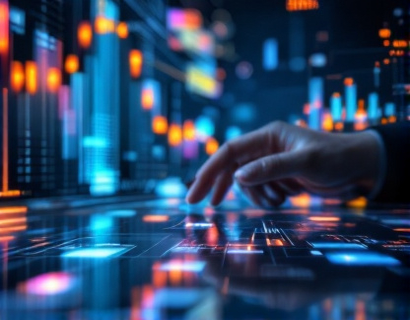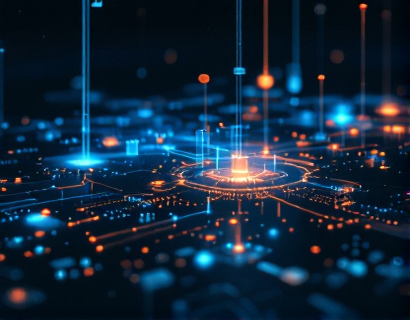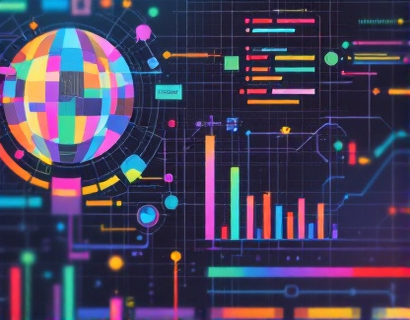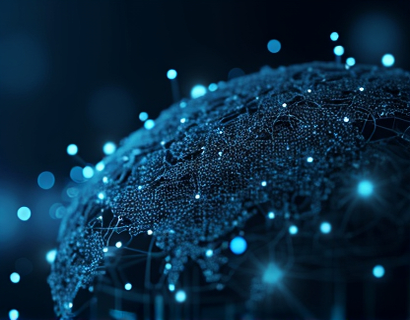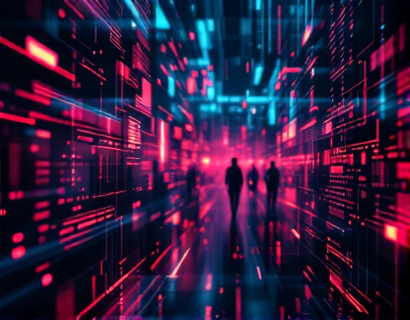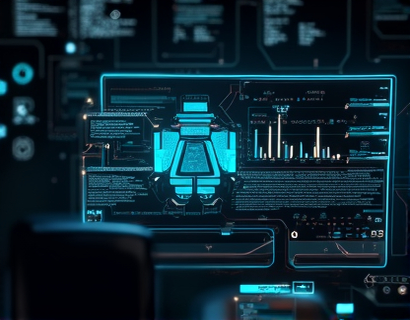AI and Crypto: Catalysts for Next-Gen Productivity Transformation
The intersection of artificial intelligence (AI) and cryptocurrency is giving birth to a new era of digital productivity, one that promises to revolutionize how we work, interact, and manage our daily tasks. This fusion of technologies is not just a novel concept but a practical solution that is already transforming industries and enhancing efficiency across the board. For tech enthusiasts and early adopters, understanding this synergy is crucial as it opens up a world of possibilities for maximizing digital productivity.
The integration of AI and cryptocurrency is multifaceted, touching various aspects of digital life from finance to communication, and from data management to security. This article delves into the key areas where these technologies are converging to create a more efficient, secure, and user-friendly digital environment. By exploring the synergies between AI and cryptocurrency, we can gain insights into how this partnership is set to redefine productivity in the digital age.
Enhancing Financial Transactions with AI and Crypto
One of the most immediate and impactful areas where AI and cryptocurrency intersect is in financial transactions. Traditional banking systems are often slow, cumbersome, and prone to errors. The combination of AI and blockchain technology, the backbone of cryptocurrency, is streamlining these processes, making them faster, more secure, and cost-effective.
AI algorithms can analyze vast amounts of financial data in real-time, identifying patterns and anomalies that can prevent fraud and ensure the integrity of transactions. Smart contracts, self-executing contracts with the terms directly written into code, leverage AI to automate and enforce contractual obligations. This reduces the need for intermediaries, lowering transaction costs and increasing efficiency. For instance, cross-border payments, which traditionally take days and incur high fees, can now be completed in minutes with minimal costs thanks to AI-driven blockchain solutions.
Moreover, AI-powered chatbots and virtual assistants are enhancing customer service in financial institutions. These AI-driven tools can handle a wide range of queries, from account balances to transaction histories, providing instant and accurate responses. This not only improves user experience but also allows human agents to focus on more complex tasks, further boosting productivity.
Optimizing Data Management with AI and Crypto
Data management is another critical area where AI and cryptocurrency are making significant strides. The exponential growth of data generated daily poses challenges in terms of storage, processing, and security. AI and blockchain technology offer robust solutions to these challenges, ensuring that data is managed efficiently and securely.
AI algorithms excel at data analysis, capable of extracting meaningful insights from vast datasets. These insights can inform business decisions, optimize operations, and drive innovation. When combined with blockchain, which provides a decentralized and immutable ledger, the integrity and transparency of data are significantly enhanced. This is particularly important in industries where data privacy and security are paramount, such as healthcare and finance.
Blockchain-based data storage solutions, powered by AI, can automatically categorize, tag, and secure data, reducing the manual effort required for data management. This not only saves time but also minimizes the risk of human error. Additionally, AI can predict data trends and potential issues, allowing for proactive measures to be taken, further enhancing productivity and operational efficiency.
Streamlining Supply Chain Operations
The supply chain industry is one of the most complex and inefficient sectors, often plagued by delays, inaccuracies, and lack of transparency. The integration of AI and cryptocurrency is transforming this landscape, making supply chains more transparent, efficient, and resilient.
AI-driven analytics can monitor and predict supply chain disruptions, optimizing inventory levels and logistics. By analyzing historical data and real-time inputs, AI can forecast demand, identify bottlenecks, and suggest optimal routes and methods for transportation. This not only reduces costs but also ensures that products reach their destinations on time.
Cryptocurrency and blockchain technology play a crucial role in this transformation by providing a secure and transparent way to track transactions and movements of goods. Each step in the supply chain can be recorded on a blockchain, creating an immutable and verifiable record. This transparency builds trust among all parties involved, from manufacturers to retailers, and reduces the risk of fraud and errors. Smart contracts can automate payments and ensure compliance with contractual terms, further streamlining the process.
For example, a blockchain-based platform can enable farmers to receive immediate payment for their produce once it is verified and delivered to the next link in the supply chain. This eliminates the need for intermediaries and ensures that farmers are compensated fairly and promptly. Such innovations not only enhance efficiency but also promote fair trade and sustainable practices.
Enhancing Cybersecurity with AI and Crypto
Cybersecurity is a growing concern in the digital age, with cyber threats becoming more sophisticated and frequent. The combination of AI and cryptocurrency offers powerful tools to bolster security measures and protect sensitive information.
AI-driven security systems can detect and respond to threats in real-time, analyzing patterns and behaviors to identify potential breaches before they occur. Machine learning algorithms continuously learn from new data, improving their ability to recognize and neutralize threats. This proactive approach to cybersecurity is far more effective than traditional static security measures.
Cryptography, the foundation of cryptocurrency, plays a vital role in securing data and transactions. Advanced encryption techniques ensure that information remains confidential and tamper-proof. Blockchain's decentralized nature adds an extra layer of security, as there is no single point of failure. This makes it extremely difficult for hackers to compromise the system.
Furthermore, AI can enhance cryptographic protocols by generating more complex and secure keys, making it harder for attackers to crack. The synergy between AI and cryptocurrency in cybersecurity not only protects against external threats but also ensures the integrity and confidentiality of data within organizations.
Improving User Experience through AI and Crypto
The user experience (UX) is a critical factor in the adoption and success of any technology. The fusion of AI and cryptocurrency is enhancing UX in various ways, making digital interactions more intuitive, secure, and personalized.
AI-powered interfaces can adapt to user preferences and behaviors, providing a tailored experience that evolves over time. For instance, AI-driven recommendation systems can suggest relevant content, products, or services based on user history and preferences. This not only improves user satisfaction but also increases engagement and loyalty.
Cryptocurrency and blockchain technology enhance UX by providing secure and seamless authentication methods. Biometric verification, combined with blockchain-based identity management, ensures that users are who they claim to be, reducing the risk of unauthorized access. This level of security gives users peace of mind, allowing them to focus on their tasks without worrying about security breaches.
Additionally, AI can optimize the user interface and experience by analyzing user interactions and feedback. This data-driven approach enables continuous improvement, ensuring that the platform remains user-friendly and efficient. For example, AI can identify frequently used features and make them more accessible, or it can streamline complex processes into simpler, more intuitive steps.
Fostering Innovation and Collaboration
The convergence of AI and cryptocurrency is not only transforming individual industries but also fostering a culture of innovation and collaboration. Developers, entrepreneurs, and businesses are coming together to create new applications and services that leverage the strengths of both technologies.
Open-source projects and decentralized development platforms are emerging, allowing a global community of innovators to collaborate on cutting-edge solutions. These platforms often use cryptocurrency as a means of incentivizing contributions, whether through development work, testing, or community support. This decentralized approach democratizes innovation, enabling a wider range of voices to participate and contribute to the advancement of technology.
For instance, decentralized finance (DeFi) platforms are reimagining traditional financial services by leveraging AI and blockchain. These platforms offer a suite of financial tools, from lending and borrowing to trading and yield farming, all accessible through smart contracts. AI algorithms optimize these services, ensuring they are efficient, secure, and user-friendly. The collaborative nature of these platforms accelerates innovation, as developers build upon each other's work, creating a vibrant ecosystem of continuous improvement.
Challenges and Considerations
While the potential of AI and cryptocurrency to transform productivity is immense, there are several challenges and considerations that must be addressed. Regulatory frameworks are still evolving, and the lack of clear guidelines can create uncertainty for businesses and developers. Ensuring compliance with existing laws while navigating the regulatory landscape is crucial for the successful adoption of these technologies.
Another challenge is the technical complexity involved in integrating AI and cryptocurrency solutions. Developers need a deep understanding of both fields to create effective and secure systems. Education and training programs are essential to equip the workforce with the necessary skills to harness the full potential of this fusion.
Moreover, there are concerns about the environmental impact of cryptocurrency, particularly proof-of-work (PoW) blockchains, which require significant computational power and energy. Transitioning to more sustainable consensus mechanisms, such as proof-of-stake (PoS), can mitigate these concerns while maintaining the security and efficiency of the blockchain.
Conclusion
The integration of AI and cryptocurrency is paving the way for a new era of digital productivity, one that is more efficient, secure, and user-friendly. By leveraging the strengths of both technologies, we can overcome many of the challenges faced in today's digital landscape. For tech enthusiasts and early adopters, embracing this synergy is not just an opportunity but a necessity to stay ahead in the rapidly evolving tech world. As we continue to explore and innovate at the intersection of AI and cryptocurrency, the possibilities for enhancing productivity and transforming industries are limitless.













